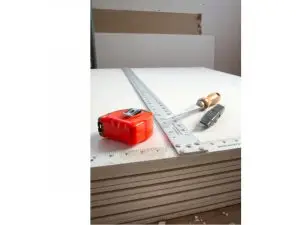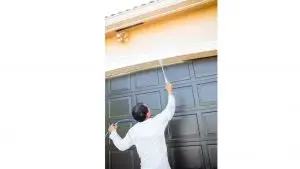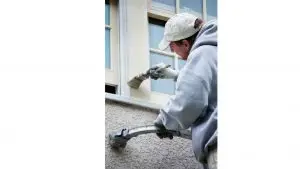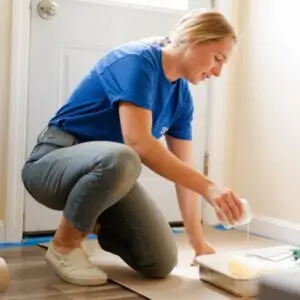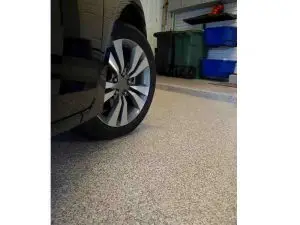
The Ultimate Guide to Drywall Repair: Tips, Tricks, and Cost Breakdown
Intro to Drywall Repair: Tips, Tricks, and Cost Breakdown
Common Drywall Repairs
There are many types of drywall damage, but some of the most common ones include:
- Holes: These can be caused by nails, screws, furniture, or accidental impacts. Small holes can be fixed with spackle, while larger ones may require patches.
- Cracks: These can be caused by settling, temperature changes, or structural issues. They can be repaired with joint compound and mesh tape.
- Water damage: This can be caused by leaks, floods, or moisture buildup. Water-damaged drywall may need to be cut out and replaced to prevent mold growth.
- Popped nails: These are nails that have pulled away from the studs, causing a bump in the drywall. They can be fixed by reattaching the drywall to the studs and covering the hole with joint compound.
Drywall Repair Tips
- Use the right tools: You’ll need a utility knife, sandpaper, joint compound, mesh tape, and a putty knife to complete most drywall repairs.
- Prep the area: Before you start, make sure the area is clean and dry. Remove any loose debris, dust, or paint chips.
- Apply joint compound in thin layers: Don’t try to fill the hole or crack in one go. Apply several thin layers of joint compound, allowing each layer to dry before applying the next.
- Sand between layers: Sand each layer of joint compound before applying the next one. This will help smooth out the surface and create a seamless repair.
- Texture matching: If you’re trying to match the texture of your existing drywall, try using a spray-on texture or a textured roller.
Drywall Repair Cost Breakdown
- The cost of drywall repair can vary depending on the size and complexity of the job. Here are some average costs for common drywall repairs:
- Small holes: $50 – $100
- Large holes: $100 – $300
- Cracks: $150 – $300
- Water damage: $300 – $500
- Popped nails: $75 – $150
At We Surv Wilmington, we offer affordable drywall repair services that are tailored to your specific needs. Our experienced professionals use the best materials and techniques to ensure a seamless repair that will last for years.
Why Choose We Surv Wilmington?
- Experience: We have years of experience in the drywall repair industry, and we’ve seen it all. No job is too big or small for us to handle.
- Quality: We use the best materials and techniques to ensure a high-quality repair that will exceed your expectations.
- Affordable: We offer competitive pricing and free estimates to help you get the most value for your money.
- Customer satisfaction: We’re committed to providing excellent customer service and ensuring your satisfaction with our work.
In conclusion, drywall repair doesn’t have to be a daunting task. With the right tools, techniques, and professionals, you can get your drywall looking like new in no time. At We Surv Wilmington,Contact us today to schedule your free estimate, and let us help you transform your home into the space you’ve always wanted! 910-317-8788
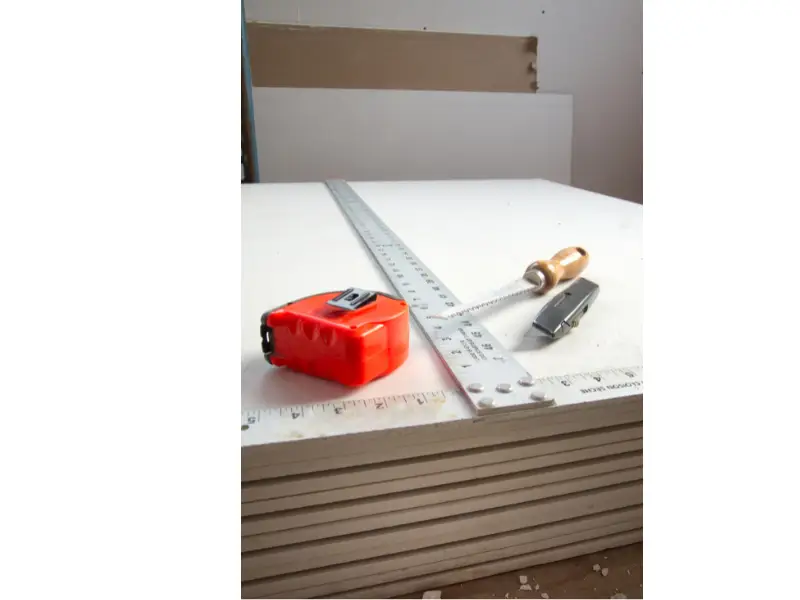
FAQ
Most frequent questions and answers
As a contractor who has been providing drywall repair services for years, I can confidently say that patching a hole in drywall is a task that requires precision and attention to detail. Here’s how I do it:
First, gather all the necessary tools and materials. You’ll need a drywall saw, a piece of drywall that matches the size of the hole, a joint compound, a putty knife, and sandpaper.
Next, you can use the drywall saw to carefully cut away any loose or damaged drywall around the hole. This will give you a clean surface to work with.
Then, cut the piece of drywall to fit the size of the hole. Make sure it’s a snug fit but not too tight.
Apply a thin layer of joint compound around the edges of the hole, then press the piece of drywall into place. Use a putty knife to smooth out any excess joint compound and ensure the edges are flush with the surrounding drywall.
Let the joint compound dry thoroughly, then apply another layer of joint compound over the patch. Use the putty knife to smooth it out and blend it with the surrounding drywall.
Repeat this step until the patch is completely smooth and level with the rest of the wall. Let the joint compound dry completely between each layer.
Once the patch is dry, use sandpaper to smooth it out and create a seamless finish. And there you have it – a perfectly patched hole in your drywall!
As a contractor specializing in drywall repair, I can confidently say that the best way to finish drywall seams is by using “taping and mudding.” First, apply a layer of drywall tape over the seam, ensuring it is smooth and free of any wrinkles or bubbles. Then, using a putty knife, apply a thin layer of joint compound (also known as “mud”) over the tape, feathering it slightly on either side. Once the first layer of mud has dried, repeat the process with a second and possibly even a third layer, each time using a wider putty knife to feather out the mud and create a smooth, even finish. Finally, sand the seams lightly to remove any bumps or imperfections, and then prime and paint as desired. With this technique, your drywall seams will look seamless and professional, leaving your clients impressed with your workmanship.
As a contractor specializing in drywall repair, I highly recommend using joint compound for your drywall repair needs. A joint compound, or mud, is a versatile and easy-to-use product that can fill in holes, cracks, and other imperfections in drywall. It’s available in different forms, such as pre-mixed, powdered, or ready-mixed, making it easy to find a type that suits your particular needs.
When selecting a joint compound for your project, consider the size and scope of the repair, as well as the type of finish you’re aiming for. If you’re working on a small repair, a pre-mixed joint compound may be your best bet. On the other hand, if you’re tackling a more significant job or need a more durable finish, a powdered joint compound mixed with water may be a better option.
Ultimately, the key to successful drywall repair is using the right products and techniques. By choosing high-quality joint compounds and following best practices for application and finishing, you can achieve seamless, professional-looking results every time.
When it comes to sanding down drywall after repair, it’s important to take your time and do it right. Here are the steps I recommend:
1. Gather your tools: You’ll need a sanding block or pole sander, sandpaper (I recommend starting with 120 grit), and a vacuum or broom to clean up the dust.
2. Start with a light touch: You don’t want to sand too aggressively and risk damaging the repair. Start with light, even strokes, and work up to more pressure as needed.
3. Use a circular motion: Rather than sanding up and down or side to side, I find it’s best to use a circular motion. This helps to blend the repair with the surrounding drywall and avoid visible lines or marks.
4. Take breaks and check your progress: Sanding can be tiring, so take breaks as needed. And please be sure to check your progress frequently to make sure you’re not sanding too much or too little.
5. Clean up the dust: Drywall dust can be a nuisance, so clean up thoroughly with a vacuum or broom. And don’t forget to wear a dust mask to protect your lungs!
With these tips, you can sand down your drywall repair confidently and skillfully. And if you ever need any products or supplies to make the job easier, don’t hesitate to contact us at We Surv Wilmington. We’re always happy.
As a contractor who has been in the drywall repair business for years, I can tell you that this is a question I get asked all the time. The truth is, it depends on the extent of the damage.
If the damage is small, like a hole from a doorknob or a small crack, it can usually be repaired with some spackling or joint compound. However, if the damage is more extensive, like water damage or a large hole, it may be better to replace the drywall.
One thing to keep in mind is that if the damage is caused by water, it’s important to find the source of the leak and fix it before repairing or replacing the drywall. Otherwise, the same problem will likely continue and cause more damage.
Ultimately, the best way to know whether to repair or replace your drywall is to consult a professional. We Surv Wilmington offer free consultations and can help you determine the best course of action for your specific situation.
As a drywall repair company serving Wilmington and the surrounding areas, we know the importance of adequately preparing drywall for painting. Here’s our process:
1. Clean the Wall: Before you do anything else, make sure the wall is clean and free of any debris or dust. You can use a vacuum or a damp cloth to wipe the surface.
2. Sand the Surface: Once the wall is clean, it’s time to sand the surface. Use fine-grit sandpaper to smooth out any bumps or imperfections. Be sure to wear a mask and goggles to protect yourself from dust.
3. Prime the Wall: Using a good quality primer will help the paint adhere better to the surface and will also help cover up any previous repairs or patches. Be sure to choose a primer that is compatible with both the drywall and the paint you plan to use.
4. Fill in Any Holes or Cracks: If there are any holes or cracks in the drywall, now is the time to fill them in. Use a spackling compound or joint compound to fill in the holes, then sand them smoothly once they’re dry.
5. Final Sanding: Once the filler is dry, sand the surface again to ensure a smooth finish. Use a light touch and fine-grit sandpaper to avoid damaging the surface.
6. Clean the Wall Again: After sanding, clean the wall again to remove any dust or debris that may have accumulated.
7. Paint the Wall: Finally, it’s time to paint the wall. Use high-quality paint and a roller or brush to apply the paint evenly. Use multiple coats if necessary and allow adequate drying time between coats.
At We Surv Wilmington, we use these same steps when preparing drywall for painting. We understand the importance of a smooth and flawless finish and take pride in our attention to detail. If you’re looking for a drywall repair company that can not only fix your damaged walls but also prepare them for a beautiful new paint job, look no further than We Surv Wilmington. Contact us today for a free consultation.
As someone who has been in the drywall repair business for some time now, achieving a professional finish requires attention to detail and the right tools. First, could you start by cleaning the area around the damaged drywall to remove any debris, dirt, or dust? Then, using a putty knife, begin to apply joint compound to the damaged areas. Take care to spread the compound evenly and smoothly, using long strokes.
Once you have applied the joint compound, allow it to dry for about 24 hours. Once completely dry, use sandpaper to smooth and level the surface. Make sure to use a fine grit sandpaper to avoid leaving scratches on the surface. After sanding, use a damp cloth to clean up the dust left behind.
For a truly professional finish, it’s important to pay attention to the details. Make sure to fill any holes and gaps with joint compound, and ensure the entire surface is smooth and level. Finally, apply a coat of primer to the surface before painting to ensure the paint adheres properly and looks its best.
With the right tools and attention to detail, you can achieve a professional finish that will satisfy and impress your clients. We Surv Wilmington offer a range of drywall repair products that can help you achieve just that. From joint compound to sandpaper, we’ve got everything you need to get the job done right.
As a contractor who specializes in drywall repair, I understand that large cracks on drywall can be daunting to repair. However, with the right tools and techniques, it can be a breeze.
First, you’ll need to gather your materials. You’ll need a drywall knife, sandpaper, joint compound, and mesh tape. You may also need a drill and screws if the crack is near a joint.
Next, use your drywall knife to scrape any loose debris from the crack. If the crack is near a joint, use the drill and screws to secure the drywall back onto the framing.
Then, could you apply the mesh tape over the crack, making sure to overlap the tape onto the undamaged drywall? This will create a strong foundation for the joint compound to adhere to.
After the mesh tape is in place, apply a thin layer of joint compound over it, making sure to smooth it out as much as possible. Allow the first layer to dry completely before applying the second layer. Repeat this process until the surface is smooth and level with the surrounding drywall.
Once the joint compound is dry, sandpaper smooth out any bumps or rough spots. Finally, paint over the repaired area to match the rest of the wall.
By following these steps, you can quickly repair large drywall cracks and restore the look of your walls. And if you ever need any assistance or supplies, don’t hesitate to contact We Surv Wilmington for all your drywall repair.
As a contractor in the drywall repair business for years, I have learned a thing or two about safety precautions. Here are some tips that I always follow and recommend to other contractors:
1. Wear protective gear: Wear a dust mask, goggles, and gloves to protect yourself from dust, debris, and chemicals.
2. Use proper tools: Use tools designed specifically for drywall repairs, such as a utility knife, sandpaper, and a putty knife. Don’t use makeshift tools that can cause injury.
3. Turn off the power: If you’re repairing drywall near electrical outlets or wires, turn off the power to the area before beginning work.
4. Secure the area: Ensure the area you’re working on is secure and free from any obstacles that may cause injury. Use caution tape or barriers to keep people away from the work site if necessary.
5. Proper ventilation: Ensure that the work area is well-ventilated to prevent inhaling any harmful dust or fumes.
6. Dispose of materials safely: Dispose of any materials, including drywall, dust, and debris, safely and responsibly.
Taking these safety precautions will ensure not only your own safety but also the safety of those around you. Always remember to prioritize safety when conducting any drywall repair work.


